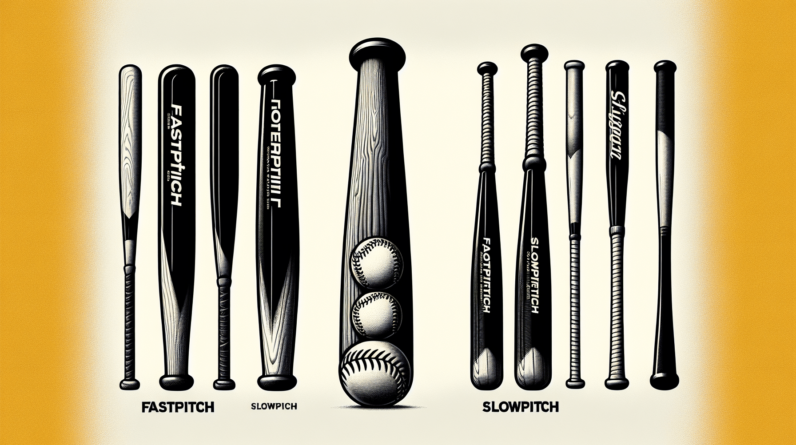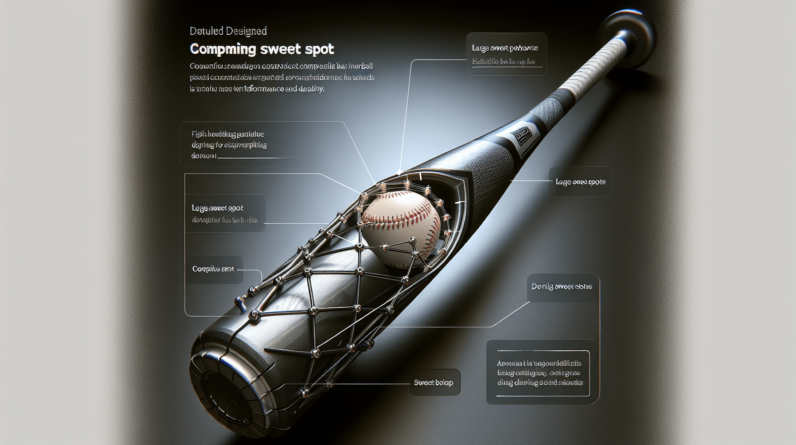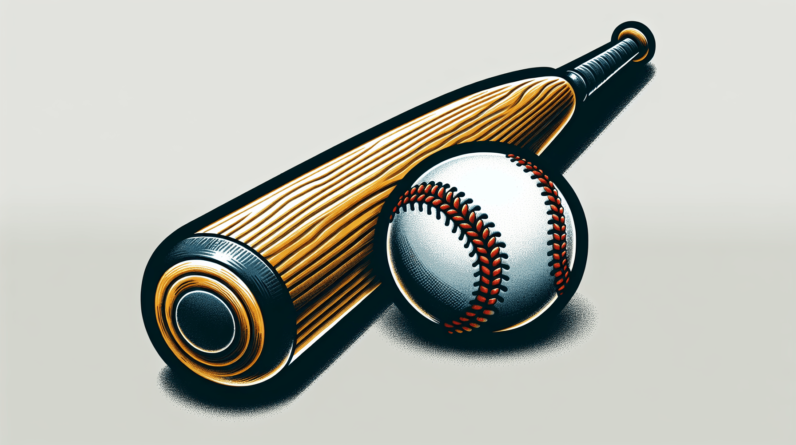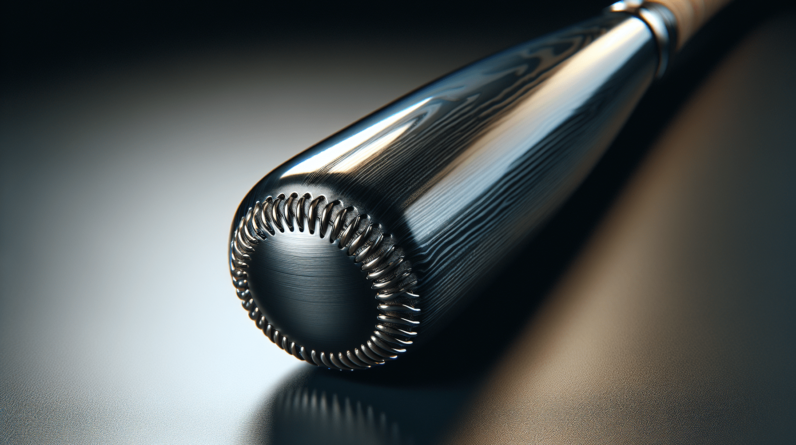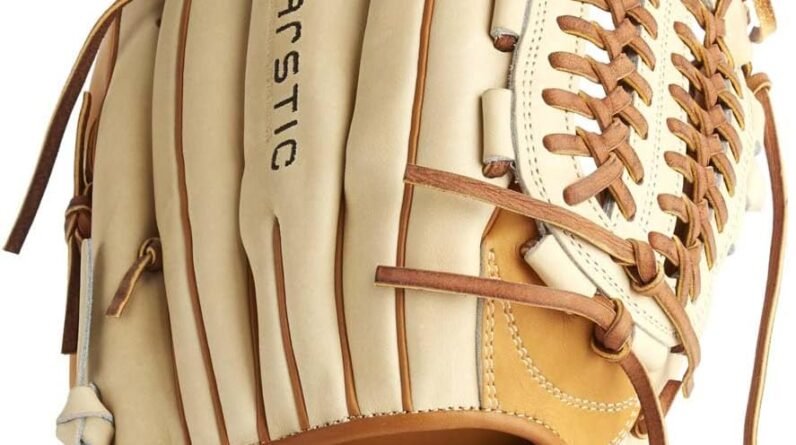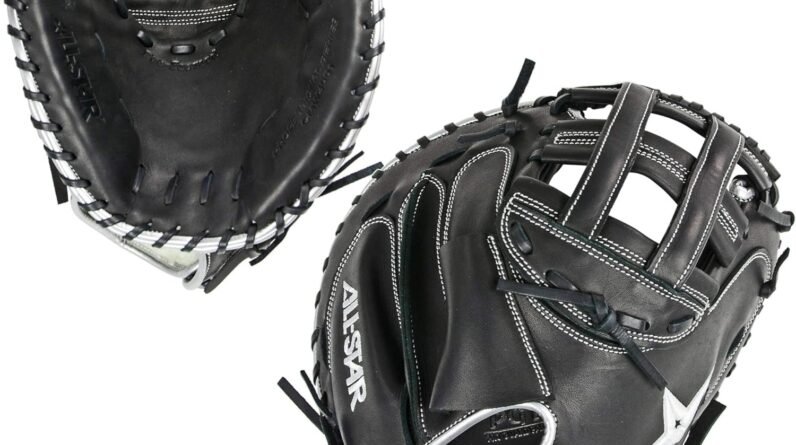Are you a softball enthusiast looking to take your game to the next level? If you’ve ever wondered whether a fastpitch softball bat can be used for slow pitch softball, then this article is for you. In this informative piece, we will explore the compatibility between fastpitch and slow pitch softball bats, discussing the key factors that determine whether or not you can successfully use a fastpitch bat for slow pitch softball. So, if you’re in need of some guidance on which bat to choose, keep reading to find out if a fastpitch softball bat could be the game-changer your slow pitch game needs.
Choosing the Right Bat
Choosing the right bat for your softball game is crucial as it can greatly impact your performance on the field. There are two main types of softball: fastpitch softball and slow pitch softball. It is important to understand the differences between these two variations before selecting a bat.
What is Fastpitch Softball?
Fastpitch softball is a highly competitive sport where pitchers throw the ball at high speeds to batters. The game requires fast reflexes, quick decision-making, and precise hitting techniques. Due to the nature of the game, fastpitch softball bats are specifically designed to maximize bat speed and provide optimal performance.
What is Slow Pitch Softball?
Slow pitch softball, on the other hand, is a more leisurely and recreational version of the sport. The ball is pitched at a much slower speed, allowing players more time to react and adjust their swings. Slow pitch softball often emphasizes the social aspect of the game, with players enjoying the camaraderie and fun of the sport.
Differences in Bat Specifications
The main difference between fastpitch and slow pitch softball bats lies in their specifications. Fastpitch softball bats are typically lighter in weight and have a length-to-weight ratio (also known as the drop) ranging from -8 to -13. They also have a thinner barrel diameter, usually around 2 ¼ inches. These specifications allow fastpitch bats to be swung with greater speed, enabling batters to generate more power and hit the ball further.
In contrast, slow pitch softball bats are generally heavier and more balanced. They have a length-to-weight ratio (drop) of -3, which means that their weight is closer to the length of the bat. The barrel diameter of slow pitch bats is larger, around 2 ¼ to 2 ¾ inches. These specifications are designed to maximize the contact and provide better control for players in slow pitch softball.
Importance of Using the Right Bat
Using the right bat in softball is crucial for multiple reasons. Firstly, it ensures that the player can optimize their performance on the field. A bat that is specifically designed for the type of game being played allows the player to have better control, swing with more power, and enhance their overall hitting technique.
Secondly, using the right bat reduces the risk of injury. Bats designed for a specific type of softball are constructed to handle the forces generated during gameplay, minimizing the chances of breakage or accidents. Using an improper bat can result in compromised safety for both the batter and the other players on the field.
Overall, choosing the right bat ensures a more enjoyable and successful experience in softball, whether it is fastpitch or slow pitch.
Using a Fastpitch Bat for Slow Pitch Softball
While it is possible to use a fastpitch softball bat for slow pitch softball, there are some advantages and disadvantages to consider.
Advantages of Using a Fastpitch Bat
One advantage of using a fastpitch bat in slow pitch softball is the bat’s lighter weight. Fastpitch bats are designed to be swung quickly, allowing for greater bat speed. The lightness of the bat can lead to improved swing mechanics and increased power in hitting the ball. Additionally, the smaller barrel diameter of fastpitch bats can help with contact and precision when making contact with the ball.
Disadvantages of Using a Fastpitch Bat
However, there are also some disadvantages to using a fastpitch bat in slow pitch softball. The lighter weight of the bat may result in less power when hitting the ball, as slow pitch softball often requires more mass behind the swing to generate power. The smaller barrel diameter can also lead to decreased sweet spot size, making it more challenging to consistently make solid contact with the ball.
Another significant disadvantage is the risk of bat breakage. Fastpitch softball bats are not designed to withstand the forces generated in slow pitch softball. The slower pitch speed may cause the bat to break more easily, posing a safety hazard on the field.
Safety Concerns
When it comes to choosing the right bat for softball, safety should always be a top priority. Using the wrong bat can increase the risk of injury and lead to accidents on the field.
Risk of Bat Breakage
Using a fastpitch bat for slow pitch softball poses a higher risk of bat breakage. Fastpitch bats are not built to withstand the forces generated by slower pitch speeds. The increased mass and reduced bat speed in slow pitch softball can cause fastpitch bats to crack, dent, or even shatter upon impact. This not only poses a safety hazard for the batter but also for other players on the field.
Reduced Bat Control
Another safety concern when using the wrong bat is reduced bat control. Slow pitch softball requires a different swing technique and power generation compared to fastpitch. Using a bat that is not specifically designed for slow pitch can lead to reduced control over the swing, making it difficult to adjust to the slower pitch speed. This lack of control not only impacts the batter’s performance but can also increase the chances of mishits and unpredictable batted ball trajectories.
Performance Considerations
Selecting the right bat goes beyond safety concerns and also affects your overall performance on the field. Consider the following performance factors when choosing a bat for your softball game.
Bat Speed and Power
Bat speed and power are critical elements in softball, regardless of whether it is fastpitch or slow pitch. The right bat allows you to generate maximum bat speed, resulting in increased power and distance in your hits. Fastpitch bats are lighter and more balanced, making it easier to swing them at higher speeds. On the other hand, slow pitch bats have more weight and mass, enabling batters to generate power through their swings.
Hitting Technique
Different types of bats can also impact your hitting technique. Fastpitch bats are designed to maximize bat speed and provide better plate coverage, as the game demands quick adjustments and precise hitting. Slow pitch bats, with their larger barrel diameter and heavier weight, promote a different hitting technique that emphasizes power and control over quick swings. Choosing the right bat for your hitting style and technique is essential for consistent performance and success on the field.
League Regulations and Rules
It is essential to familiarize yourself with the league regulations and rules regarding bats before making a purchase. Different leagues may have variations in their rules, including specific bat requirements and restrictions.
Rule Variations
Different leagues, tournaments, or associations may have their own specific rules regarding bats. These rules may include restrictions on bat materials, barrel sizes, or even a banned bat list. It is crucial to be aware of these rules to ensure compliance and avoid any penalties or disqualifications. Familiarize yourself with the rules of your league or association, and consult with your coach or league officials if you have any questions or concerns.
Specific Bat Requirements
Some leagues may have specific bat requirements, particularly in terms of bat certifications and stamps. For example, both fastpitch and slow pitch softball bats may require certification from governing bodies such as USA Softball, USSSA, or ASA. These certifications ensure that the bat meets certain performance standards and is approved for use in official games and tournaments. Be sure to check the specific requirements for your league or competition to ensure that the bat you choose is permissible.
Bat Equipment Weight and Balance
The weight and balance of a bat can greatly impact your performance and comfort on the field. Consider these factors when selecting a bat for your softball game.
Bat Weight
The weight of a bat is a personal preference that varies from player to player. Some players prefer a lighter bat for increased bat speed and improved swing mechanics, while others prefer a heavier bat for increased power. Fastpitch softball bats are typically lighter in weight to maximize bat speed, whereas slow pitch bats are often heavier to generate power in slower pitch environments. Experiment with different bat weights to find the one that suits your swing and playing style best.
Bat Length and Balance
The length and balance of a bat also play a crucial role in performance. The length of the bat should be comfortable for the player and allow for proper hand positioning and plate coverage. Fastpitch and slow pitch bats have different length-to-weight ratios due to the specific requirements of each type of game. Additionally, the balance of the bat refers to the distribution of weight throughout the bat. Some bats are more end-loaded, which means that more weight is concentrated towards the end of the barrel, while others have a more balanced weight distribution. Finding a bat with the right length and balance can significantly impact your swing mechanics and overall performance.
Player Skill Level
The skill level of the player is an important factor to consider when choosing a bat. Whether you are a beginner or an experienced player, the bat you select can greatly impact your skill development and performance on the field.
Impact on Skill Development
For beginners, using a bat specifically designed for the type of softball being played can aid in skill development. The right bat can help beginners learn proper swing mechanics, hand-eye coordination, and hitting techniques specific to the game they are playing. As players progress and improve their skills, they may choose to adjust their bat specifications to match their playing style and hitting preferences.
Adjusting to the Bat
Regardless of skill level, it is important to spend time adjusting to a new bat before using it in a game. Practice swings and batting practice sessions can help players become familiar with the feel, weight, and balance of the bat. This adjustment period allows players to fine-tune their swinging mechanics and adjust their timing to optimize their performance with the new bat.
Recommendations for Slow Pitch Players
If you are a slow pitch softball player looking for the right bat, here are some recommendations to help you make an informed decision.
Choosing a Slow Pitch Bat
To ensure optimal performance in slow pitch softball, it is recommended to choose a bat specifically designed for this type of game. Slow pitch bats are typically heavier and have a larger barrel diameter, enabling players to generate more power and control. These bats are built to withstand the forces generated in slow pitch softball and reduce the risk of breakage or accidents.
Advantages of Using a Slow Pitch Bat
Using a slow pitch bat in slow pitch softball provides several advantages. The larger barrel diameter allows for a larger sweet spot, increasing the chances of making solid contact with the ball. The additional weight helps generate power and distance in hits, making it easier to clear the outfield or hit deep to drive in runs. The design and specifications of slow pitch bats are tailored to enhance the player’s performance in this specific type of softball, making them a reliable choice for slow pitch players.
Conclusion
Choosing the right bat for your softball game is crucial for both safety and performance. Understanding the differences between fastpitch and slow pitch softball and the corresponding bat specifications is essential before making a purchase. While it is possible to use a fastpitch bat for slow pitch softball, there are certain advantages and disadvantages to consider. Safety concerns such as the risk of bat breakage and reduced bat control should be taken into account. Performance considerations, including bat speed, power, and hitting technique, also play a significant role in bat selection. Additionally, league regulations and rules, bat weight and balance, player skill level, and specific recommendations for slow pitch players should be considered when choosing a bat. By carefully evaluating these factors and making an informed decision, you can select a bat that enhances your performance, maximizes your enjoyment of the game, and ensures your safety on the field.

